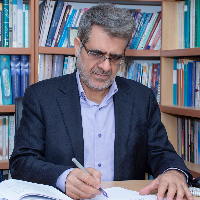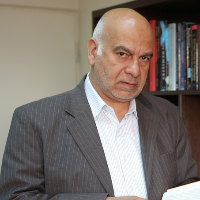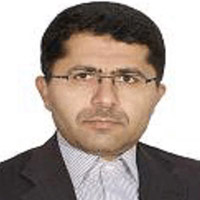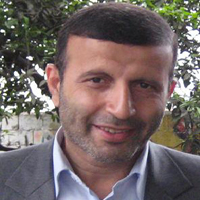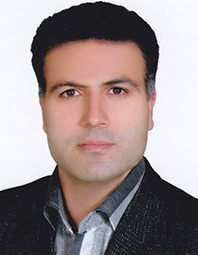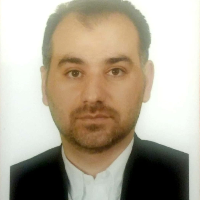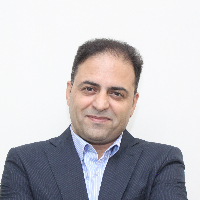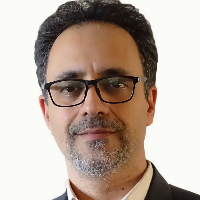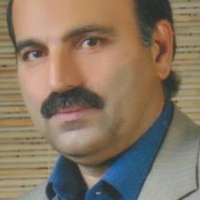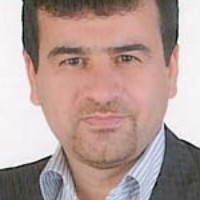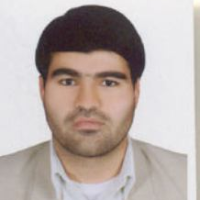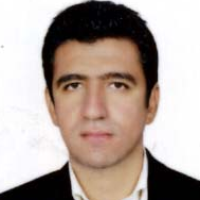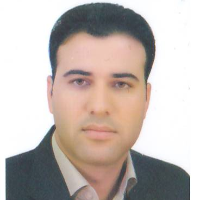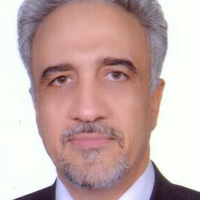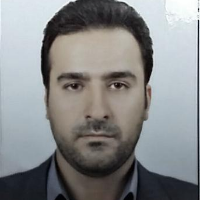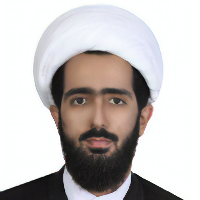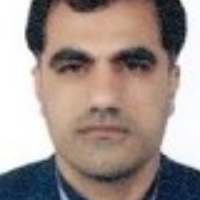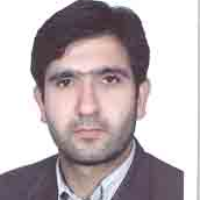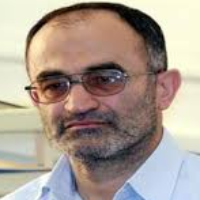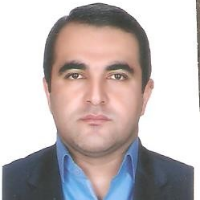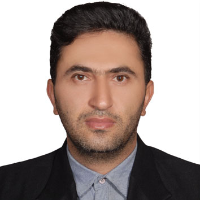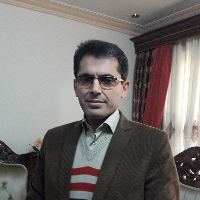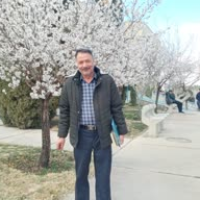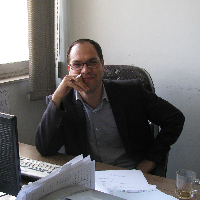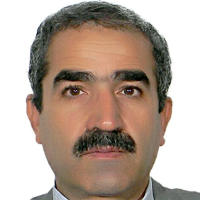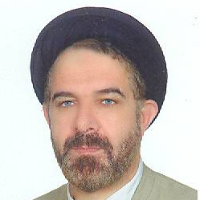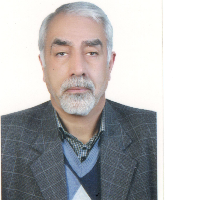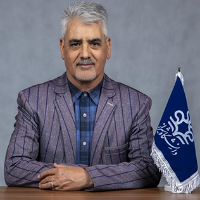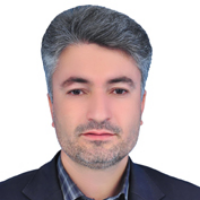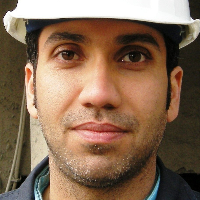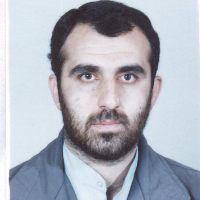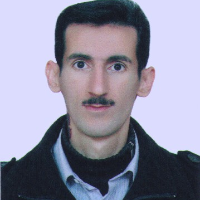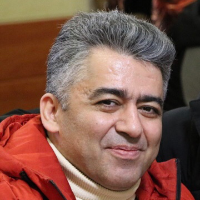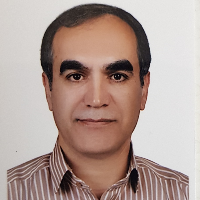ali akbar
-
زمینه و هدف
طرح ادغام می تواند به افزایش کمی و کیفی عرضه سرمایه انسانی سلامت، پاسخگوتر شدن آموزش ها نسبت به نیازهای جامعه، تعمیق و تکمیل ادغام پژوهش و آموزش عالی سلامت در عرصه مراقبت ها و خدمات سلامت منجر شود. مطالعه حاضر با هدف تبیین و ترسیم نقشه راهی برای پیاده سازی مرحله سوم ادغام انجام شد تا در صورت عزم مدیریت کلان کشور به تکمیل و تعمیق ادغام، به تسهیل پیاده سازی آن کمک نماید.
روشمطالعه حاضر مطالعه کیفی از نوع تحلیل محتوا است. در این مطالعه از روش ترکیبی درون پارادایمی استفاده شد که برای سه سو سازی از بیش از یک روش در تدوین نقشه راه استفاده شد.
یافته هایافته های این مطالعه نشان داد اولین قدم برای تکمیل ادغام، توسعه و تکمیل شبکه می باشد. یافته ها حاکی از این بود که اصلاحات هم باید در ساختار علمی یعنی بخش آموزش و پژوهش و هم در بخش ارائه خدمات سلامت، یعنی بخش بهداشت و درمان صورت گیرد؛ اما هم زمان باید به اصلاح فرایندهای پشتیبانی از جمله مدیریت نیروی انسانی و توزیع منابع توجه شود و هم برای فرهنگسازی و همراه کردن افکار عمومی به صورت اقنایی و مشارکتی اقدام کرد.
نتیجه گیریبرای پیاده سازی مرحله سوم ادغام آموزش علوم پزشکی در نظام سلامت ضروری است تا علاوه بر اصلاحات نرم مانند تغییر باورها و نگرش های درون و برون سازمانی و اصلاح تشکیلات و آیین نامه ها و مقررات، برای اصلاحات زیربنایی در شیوه مدیریت آموزش، پژوهش، بهداشت و درمان نیز اقدامات برنامه ریزی شده ای صورت گیرد. قطعا تمرکز بر یک قسمت از این ساختار و فراموش کردن سایر اجزا باعث هدر رفتن منابع می شود.
کلید واژگان: آموزش پزشکی، ارائه مراقبت های بهداشتی، ایران، خدمات بهداشتی درمانیBackgroundThe integration plan can lead to a quantitative and qualitative increase in the supply of health human capital, making education more responsive to the needs of society, and deepening and completing the integration of research and higher education in health care and services. The present study was conducted with the aim of explaining and drawing a road map for the implementation of the third phase of the integration, in order to facilitate its implementation if the country's macro management is determined to complete and deepen the integration.
MethodsThe present study is a qualitative study of content analysis type. In this study, a combined method within the paradigm was used, in which more than one method was used in the development of the road map for triangulation.
ResultsThe findings of this study showed that the first step to complete the integration is to develop and complete the network. The findings indicated that reforms should be made both in the scientific structure, i.e. the education and research sector, and in the health service provision sector, i.e. the health and treatment sector. But at the same time, attention should be paid to the reform of support processes, including human resource management and resource distribution, and to create culture and engage public opinion in a persuasive and participatory manner.
ConclusionIn order to implement the third phase of the integration of medical science education in the health system, it is necessary to take measures for basic reforms in the management of education, research, health and treatment, in addition to soft reforms such as changing beliefs and attitudes inside and outside the organization and reforming organizations and bylaws and regulationsDefinitely, focusing on one part of this structure and forgetting other components will lead to a waste of resources
Keywords: Delivery Of Health Care, Health Services, Iran, Medical Education -
اعتماد اجتماعی مهم ترین شاخص سرمایه اجتماعی است که ارتقای آن انسجام و همبستگی بین اعضای جامعه، گروه ها و سازمان ها را تقویت می کند. هدف این پژوهش، تدوین سناریوهایی درباره آینده های ممکن، محتمل و مطلوب اعتماد اجتماعی در سال 1404 ساکنان شهر تهران است. روش این پژوهش، ترکیبی از روش های کمی و کیفی است؛ با مرور منابع و بررسی و تحلیل اسناد، مصاحبه اکتشافی، پویش محیطی و دلفی خبرگان، 11 پیش ران اصلی شناسایی و با روش تحلیل ماتریس متقاطع و روش تحلیل ماتریس موازنه بر گذار، سناریو های ممکن، محتمل و مطلوب آینده اعتماد اجتماعی تدوین شده است. با به کارگیری نرم افزار سناریو ویزارد، 288 سناریو ممکن از ترکیب وضعیت های احتمالی توصیف گرهای پیش ران ها گزارش شد. از این تعداد، دو سناریو با سازگاری و هماهنگی درونی بود. در سناریوی اول، دوزخ، چاه ویل، آینده وضعیت اعتماد اجتماعی، در تمام سطوح (اعتماد نهادی، اعتماد تعمیم یافته و اعتماد بین شخصی) دچار سیر کاهشی شدید بوده و بی اعتمادی به صورت چشم گیری افزایش خواهد یافت. در تصویر مطلوب آینده وضعیت اعتماد اجتماعی، سناریوی دوم که با عنوان مدینه فاضله، بهشت، شراب طهور، نام گذاری شده است، برعکس سناریوی اول، وضعیت اعتماد اجتماعی در هر سه سطح سیر افزایشی و بسیار مطلوبی خواهد داشت. با توجه به یافته های پژوهش حاضر و احتمال بیشتر وقوع سناریوی اول (سناریو محتمل)، براساس نظر خبرگان، برخی از راهبردهای پیشنهادی برای تحقق سناریوی دوم (سناریوی مطلوب) شامل تثبیت دموکراسی، اجرای یکسان قانون درباره همه مردم، اصلاح یا لغو قوانین فساد زا و نیز تسهیل گردش آزادانه اطلاعات می شود.کلید واژگان: آینده پژوهی، اعتماد اجتماعی، ماتریس تاثیرات متقاطع، سناریو ویزاردJournal of Fundamental and Applied Studies of the Islamic World, Volume:5 Issue: 18, 2024, PP 79 -109Living in today's societies is impossible without mutual communication with others, and meeting all kinds of individual needs forces people to interact with one another. These interactions create expectations among the parties involved, which can be defined and explained through social trust.
Most of the research conducted on the phenomenon of social trust has shown a decrease in social trust at the community level. For example, in the analysis of the trend of interpersonal trust in two surveys (the first wave of the 2000 Iranian Values and Attitudes National Survey and the 2017 National Report on the Social, Cultural, and Moral Status of the Iranian Society), it was found that trust in family members in 2017 compared to 2000 has increased, but trust in family and relatives is less, and trust in friends has decreased drastically. Also, in the analysis of the generalized trust trend based on the first wave of the national survey of values and attitudes of Iranians that was conducted in 2000 and the second wave of the national survey of social capital that was conducted in 2014, the level of trust in doctors, teachers, university professors, The judgment of journalists, clerics, and law enforcement officials has decreased, which is a serious decrease in trust in teachers, university professors, and doctors. Also, in the second wave of the national survey of the values and attitudes of Iranians (2003), in response to the question of how reliable you think people are in general (evaluation of the general trend of social trust), 28.8% said that people are less are reliable, 56.9% average and 14.3% have evaluated people as very reliable. Also, in the second wave of the national social capital measurement survey (2014), 35.6% believed that people are little or very little trustworthy. 47.1% moderate and 17.3% have evaluated the reliability of people as high and very high. As you can see, people's trustworthiness has decreased.
Therefore, it is necessary to continuously monitor and evaluate the state of the phenomenon of social trust at different levels. This will allow for the assessment of the necessity and feasibility of reviewing the plans and the methods of implementing them formulated by the authorities, to prevent the emergence of a crisis of distrust in society that could potentially lead to social collapse.
The formation of trust and related theories can be divided into three levels: macro, medium, and micro. At each of these levels, various theories have been presented, each offering a distinct perspective on the social phenomenon of trust.
Trust at the macro level, as a characteristic of social relations or a characteristic of a social system, such as the performance of institutions, especially government institutions, democracy, the performance of the judicial system in ensuring equal implementation of the law for all people, accountability and transparency in affairs, the equal distribution of justice, and in general, is conceptualized as a collective characteristic.
Trust at the intellectual level is presented as a personal characteristic and emphasis is placed on personal feelings, emotions, and values, in the investigation of trust, personal variables such as; Honesty, truthfulness, faithfulness to promises, cooperative tendencies, altruism, frankness, network of personal interactions, etc. are taken into consideration.
Between micro and macro theories of trust, theorists like Giddens reject reductionism in the study of the concept of trust. Instead, they analyze trust by combining micro-level and macro-level analyses, considering both the processes of construction and action.
The purpose of this research is to compile scenarios on the possible, probable, and desirable futures of social trust among 1404 residents of Tehran. The research methodology combines quantitative and qualitative approaches, including a review of sources, analysis of documents, exploratory interviews, environmental surveys, and expert Delphi sessions. Eleven key drivers were identified: 1- Perception of power 2- Perception of corruption 3- Social participation 4- Perception of justice 5- Change in shared moral values 6- Life satisfaction 7- Social harm 8- Religiosity 9- Sense of security 10- Altruism 11- Growth and development of technology and communication innovations.
Through cross-matrix analysis, the relationships and mutual influences among these drivers were examined. The most impactful driver in direct relationships was life satisfaction, while the perception of justice had the most significant direct impact. In indirect relationships, the perception of justice emerged as the most influential driver, with the perception of government performance being the most effective in indirect relationships.
Utilizing scenario wizard software and the transition balance matrix analysis technique, seven key drivers were further identified for scenario formulation: perception of justice, social harm, social participation, perception of corruption, perception of government performance, life satisfaction, and change in shared values.
In the output of the scenario wizard software to determine the possible, probable, and desirable scenarios of the future of social trust, 288 possible scenarios were reported from the combination of the possible states of the descriptors of the drivers. Of these, there were two scenarios with compatibility and internal harmony. In the first scenario called "Hell; Chah Weil," the future of the social trust situation at all levels (institutional trust, generalized trust, and interpersonal trust) has experienced a sharp downward trend, and distrust will increase dramatically. This scenario depicts a future of social trust in which various dimensions of social trust will have a downward trend in terms of institutional trust, generalized trust, interpersonal trust, and institutional trust.
In the ideal image of the future state of social trust, the second scenario—called ‘Utopia: Behesht’—presents a contrasting perspective. Unlike the first scenario, social trust in all three levels will experience an upward trend and be highly favorable.
According to the findings of current research and the higher probability of the first scenario (probable scenario), based on expert opinions, some suggested strategies to realize the second scenario (optimal scenario) include: stabilizing democracy, ensuring equal implementation of the law for all people, reforming or abolishing corrupt laws, and facilitating the free flow of information. -
پژوهش حاضر با هدف ارایه الگوی توسعه کارآفرینی در حوزه صنایع فرهنگی بومی ایران انجام شده است. پژوهش از نظر هدف، کاربردی؛ از نظر داده ها، آمیخته اکتشافی و از نظر نحوه اجرا، داده بنیاد نظام مند و پیمایشی مقطعی است. جامعه مرحله کمی، کلیه مدیران ارشد و میانی حوزه های مدیریت فرهنگی در ادارات و موسسات دولتی و غیرانتفاعی تهران به تعداد 2830 نفر بودند که 341 نفر از طریق جدول مورگان و کرجسی، به عنوان نمونه تعیین و سپس به روش در دسترس، اقدام به نمونه گیری شد. ابزار مورد استفاده مصاحبه نیمه ساختاریافته و پرسشنامه بود. تحلیل داده های کیفی به روش کدگذاری انجام شد و برای تحلیل داده های کمی از روش تحلیل عاملی اکتشافی و تحلیل عاملی تاییدی استفاده شد. تجزیه و تحلیل داده ها در مرحله کمی، یافته های بخش کیفی را تایید کردند و الگوی توسعه کارآفرینی در حوزه صنایع فرهنگی بومی ایران با 6 بعد، 21 مقوله اصلی و 122 مقوله فرعی طراحی شد. بر این اساس عوامل زمینه ساز الگوی توسعه کارآفرینی در حوزه صنایع فرهنگی بومی ایران شامل عوامل حمایتی و عوامل محیطی؛ عوامل علی شامل عوامل فردی، عوامل ساختاری، عوامل قانونی و عوامل مالی؛ عوامل مداخله گر شامل متغیرهای مالی، نظام مدیریت، فناوری؛ راهبردها شامل مدیریت و برنامه ریزی کلان فرهنگی، رهبری کارآفرینانه، سیاست گذاری، تجاری سازی و راهبرد اقتصادی و نهایتا پیامدها شامل رشد و توسعه کشور، توسعه فرصت های محیطی، کارکرد اقتصادی، رفاه و پویایی اجتماعی و سالم سازی ساختاری بودند.
کلید واژگان: الگو، توسعه کارآفرینی، صنایع فرهنگی بومی ایران، کارآفرینی -
گروههای مرجع به عنوان سرمایه های اجتماعی یک جامعه نقش فراوانی در انحطاط و رشد جوامع دارند. این تحقیق که به روش توصیفی تحلیلی به نگارش در آمده است، در پی تبیین نقش این گروهها و مشخصا نقش حاکمان و عالمان در تعالی یا انحطاط جامعه از دیدگاه امام خمینی است. نتیجه این پژوهش این که حاکم صالح که مصداق بارز آن ولی فقیه است، موجب ترقی و اصلاح جامعه شده، طاغوت و استعمارگری را دور و دیکتاتوری و استبداد را نفی میکند. حاکمان ناصالح نیز با ایجاد «قرنطینه سیاسی» (استبداد)، قدرت خلاقیت یک جامعه را از بین برده و موجب عقب ماندگی آن می شوند. عالمان صالح نیز با مسئولیت پذیری در برابر دین و جامعه (بیداری جامعه)، نقش معتنا بهی در تعالی جامعه دارند؛ همان گونه که عالمان ناصالح؛ چه در حوزه(روحانی نماها وآخوندهای درباری) و چه در دانشگاه(روشن فکران غربزده و اساتید منحرف) نقش فراوانی در انحطاط جامعه دارند. افزون بر این موارد، امام خمینی1 نقش سکوت نخبگان در انحطاط جامعه را با تمسک به سه روی کرد فقهی، سیاسی و فرهنگی و تمدنی موثر می داند.
کلید واژگان: امام خمینی، گروه های مرجع، تعالی جامعه، انحطاط جامعهReference groups as social capitals of a society play a substantial role in the decline and growth (excellence) of society. Drawing upon descriptive-analytic method, the research seeks to explain the role these groups, especially rulers and scholars, play in the growth and decline of a society from the viewpoint of Imam Khomeini. The results of the research indicate that virtuous ruler, who is best exemplified in the Muslim guardian jurist, contributes to the progress and reform of society on the one hand, and rejects any from of illegitimate sovereignty and tyrrany on the other. Unrighteous rulers hinder the power of creativity in society and retard the progress of it. Righteous scholars play a decisive role in the growth and excellence of society by taking responsility for religion and society (awakening society); just as the unrighteous scholars, whether working in the Seminary [of Qum], the School of Religious Sciences, (such as false scholars and court mullahs) or working in universities (Westernized intellctualls and corrupt professors) have a big role in the decline of society. In addition to these cases, Imam Khomeini thinks of the silence of the elites as playing influential role in the decline of society having recourse to the three jurisprudential, cultural and civilization approaches.
Keywords: Imām Khomeini, reference groups, excellence of society, decline in society -
به منظور بررسی پارامترهای فتوسنتزی و عملکردی گیاه عدس در شرایط دیم، لاین های منتخب عدس به همراه ارقام شاهد در قالب طرح بلوک های کامل تصادفی با سه تکرار در ایستگاه تحقیقات دیم خدابنده استان زنجان در دو فصل زراعی 98-1397 و 99-1398 مورد بررسی قرار گرفتند. نتایج نشان داد که تفاوت معنی داری در صفات تابش فعال فتوسنتزی، دمای برگ، کارآیی مصرف آب فتوسنتزی، هدایت مزوفیلی، کارآیی مصرف آب، وزن100دانه و عملکرد بین دو سال اجرای آزمایش وجود دارد. ژنوتیپ های مورد مطالعه در صفات دمای برگ، میزان فتوسنتز، ارتفاع گیاه، وزن100دانه و عملکرد اختلاف معنی داری را با یکدیگر نشان دادند که حاکی از تنوع بالای ژنتیکی این ژنوتیپ ها از لحاظ این صفات بود. در بین ژنوتیپ های مورد مطالعه ژنوتیپ G5، ژنوتیپی با ویژگی های برتر زراعی بود که جهت معرفی به عنوان رقم با پتانسیل عملکرد بالا قابل بررسی می باشد. میزان فتوسنتز با دمای برگ همبستگی منفی معنی دار و با صفات میزان تعرق، هدایت روزنه ای، هدایت مزوفیلی، کارآیی مصرف آب و وزن100دانه همبستگی مثبت معنی دار نشان داد. در نهایت، تجزیه رگرسیون نشان داد که دو صفت هدایت روزنه ای و غلظت CO2 زیر روزنه ای تبیین کننده تغییرات میزان فتوسنتز بودند.
کلید واژگان: تجزیه رگرسیون، تعرق، فتوسنتز، هدایت روزنه ای، هدایت مزوفیلیInroductionConsidering the development of cultivation and production of legumes and the importance of genetic studies in plant breeding, identifying the genetic potential of these plants is very important. Knowledge of genetic diversity and relationships between genotypes is important for understanding available genetic variability and the potential to use it in breeding programs. According to previous studies on lentils, it was found that improving the yield potential per unit area can be one of the important criteria for increasing the production of this plant. Increasing the yield per unit area is possible mainly by modifying and creating high-yielding cultivars, improving the characteristics and increasing the quantitative and qualitative potentials. Breeders and plant physiologists believe that in order to be more productive in improving compatible cultivars in areas with limited water resources, recognizing the agronomic traits affecting grain yield under stress conditions will be of great importance; Therefore, indirect selection based on physiological traits has been proposed as a complement to the selection of cultivars with high yield potential. Considering the different reactions of photosynthetic indices under stress conditions, it is important to know the genotypic diversity of photosynthetic indices under culture conditions and their relationship with grain yield. Despite numerous studies on the role of physiological traits in drought tolerance in crops, recent studies on lentils, especially in Iran, are limited. This study was designed and carried out with the aim of determining genotypes with desirable physiological and yield traits and the relationship between these traits and photosynthesis under rainfed conditions.
Materials & MethodsIn order to study the photosynthetic and yield parameters of lentil plant in rainfed conditions, selected advanced lentil lines with control cultivars were studied in a randomized complete block design with 3 replications in Khodabandeh dryland research station in Zanjan Province in two cropping seasons 2018 to 2020. Physiological traits included photosynthesis per unit leaf area, stomatal conductance, transpiration rate, photosynthetic activated radiation, sub stumatal CO2, leaf temperature, photosynthetic water use efficiency, mesophilic conductivity and water use efficiency. Plant height, 100-seed weight, number of pods and yield (kg/ha) were also measured for each genotype in each plot. Analysis of variance and comparison of means were performed using Duncan's test at 5% probability level. Finally, correlation analysis and stepwise regression analysis were performed with the variables of photosynthesis rate and total yield.
Results & DiscussionThe results showed that there was a significant difference in photosynthetic active radiation, leaf temperature, photosynthetic water use efficiency, mesophilic conductivity, water use efficiency, 100-grain weight and yield between two years of experiment. The studied genotypes showed significant differences in leaf temperature, photosynthesis, plant height, 100-seed weight and yield, which indicated the high genetic diversity of these genotypes in terms of these traits. The interaction effect of genotype per year was not significant in all studied traits, which shows that the trend of changes in these traits between genotypes during the two years was the same. Among the studied genotypes, G5 genotype is a genotype with superior agronomic characteristics that can be recommended as a cultivar with high yield potential. Photosynthesis rate showed a significant negative correlation with leaf temperature and significant positive correlation with transpiration rate, stomatal conductance, mesophilic conductivity, water use efficiency and 100-grain weight. 100-seed weight showed a significant negative correlation with leaf temperature and a significant positive correlation with stomatal conductance, photosynthesis, mesophilic conductivity and water use efficiency. These results show that drought and lack of water in the soil have the greatest effect on reducing photosynthesis and plant yield at different phenological stages (seedling, flowering and podding) of the plant. Finally, regression analysis showed that stomatal conductance and sub stumatal CO2 explained the changes in photosynthesis.
ConclusionThe results showed that for lentils, two traits of stomatal conductance and sub stumatal CO2 concentration may explain the changes in photosynthesis. Genetic diversity is very important for crop breeding and higher diversity of genotypes provides a better chance of producing a variety of desirable cultivars. The observed genetic diversity in traits can help select superior genotypes based on phenotypic expression and can be used in breeding programs to improve economically important traits. Finally, among the studied genotypes, G5 genotype was found to be a genotype with superior agronomic characteristics that could be recommended to the farmers to improve lentil yield.
Keywords: Mesophilic conduction, Photosynthesis, Regression analysis, stomatal conductance, Transpiration -
International Journal Of Nonlinear Analysis And Applications, Volume:13 Issue: 1, Winter-Spring 2022, PP 2411 -2423
The goal of any profit organization is to bolster its revenue by providing useful suggestions to its customer base. In order to achieve this, vast research is being undertaken by companies such as Netflix and Amazon on their Recommendation Systems and providing users with choices, they are most likely to click on. The purpose of this paper is to provide a holistic view of types of Recommendation Engines and how they are implemented, scaled and can provide a basis for revenue generation. The focus would be to implement a Recommendation Engine on PySpark using the ALS (Alternate Least Square) method. Besides, Neo-4j and Cypher query language for implementing recommendations on a graph database and analyzing how heterogeneous information can be levied to tackle the infamous cold start problem in recommender engines would be explored. The dataset used for analysis is the Group-lens 100K Movie-lens dataset and the algorithm is implemented to best fit the dataset. Further, an in-depth comparison of several techniques has been carried out on the basis of different metrics, hyper-parameter selection and the number of epochs used. The claims have been justified by evaluating the performance of the model depending on the different use cases, thus aiding in predictive analytics of the movie, as per the interest of the customer using visualization tools.
Keywords: Collaborative filtering, content-based filtering, popularity-based filtering, recommender system, neural networks -
پژوهش حاضر به دنبال تدوین الگوی جامع کیفیت حسابرسی مالیاتی با رویکرد زمینه بنیان می باشد و جزء پژوهش های اکتشافی محسوب می شود و با توجه به این موضوع که با داده های کیفی سروکار دارد، در طبقه پژوهش های کیفی و از لحاظ نتیجه نیز در زمره پژوهش های توسعه ای قرار میگیرد. در این پژوهش با نمونه گیری نظری و جمع آوری اطلاعات از طریق مصاحبه با 20 نفر از خبرگان حرفه حسابرسی مالیاتی در سال 1399 و سپس تحلیل اطلاعات و در نهایت استخراج مدل و خلق نظریه طی سه مرحله اصلی (کدگذاری باز، کدگذاری محوری، کدگذاری انتخابی) انجام گردید. در این پژوهش با استفاده از رویکرد نظام مند استراوس و کوربین (1998)، الگوی کیفیت حسابرسی مالیاتی همراه با مولفه های توضیح دهنده آن، یعنی شرایط علی، شرایط بستر، راهبردها، عوامل مداخله گر و پیامدها، تبیین شد.در تدوین الگوی کیفیت حسابرسی مالیاتی، پتانسیل های منابع انسانی، سازمانی و مودیان مالیاتی جزء شرایط علی شناسایی شده اند که این انتخاب در بستری از عوامل اقتصادی و سیاسی داخلی و کلان، عوامل فرهنگی و بازار و الزامات بورس اوراق بهادار صورت می گیرد. راهبردها نیز در دو سطح سازمانی و سطح مودیان مالیاتی دسته بندی شدند که مهمترین آنها عبارتند از: استقرار سامانه جامع اطلاعاتی برای فعالان اقتصادی، اجرای کارآمد سیستم اتوماسیون الکترونیکی، استقرار کارگروه کنترل کیفیت پرونده های حسابرسی مالیاتی که می تواند پیامدهایی کوتاه مدت و بلند مدت از جمله بهره وری سازمانی و مالی به همراه داشته باشد. همچنین نتایج پژوهش نشان می دهد راهبرد های اتخاذ شده در همه سطوح کیفیت حسابرسی مالیاتی با توجه به شرایط موجود متناسب و متفاوت بوده است. در اتخاذ راهبردهای الگوی کیفیت حسابرسی مالیاتی، برخی شرایط مداخله گر همچون عدم تجربه و سهل انگاری کارشناسان مالیاتی، فرصت طلبی مدیران، پیچیدگی و تغییر سریع قوانین و مقررات حاکم، کیفیت حسابرسی مالیاتی را با دشواری مواجه ساخته است
کلید واژگان: کیفیت حسابرسی مالیاتی، رویکرد نظام مند، نظریه پردازی زمینه بنیانthe current research Development the Comprehensive Model of Tax Audit Quality in Iran Based on Grounded Theory Approach،and considered as exploratory research and due to the fact that it deals with qualitative data, it is in the category of qualitative research and in terms of results is also in the category of developmental research. In this research, by theoretical sampling and collecting information through interviews with 20 experts in the field of tax auditing in 2020 and then analyzing the information and finally extracting the model and creating a theory in three main stages (open coding, axial coding, selective coding) done. In this study, using the systematic approach of Strauss and Corbin (1998), the tax audit quality model was explained along with its explanatory components, ie causal In formulating the quality model of tax audit, the potentials of human resources, organizations and taxpayers have been identified as causal conditions that this choice is made in the context of domestic and macroeconomic and political factors, cultural and market factors and the requirements of the stock exchange. Strategies were also categorized into two levels of organization and taxpayers, the most important of which are: the establishment of a comprehensive information system for economic actors, the efficient implementation of electronic automation system, the establishment of a quality control working group of tax audit files that can have short-term and long-term consequences. Including organizational and financial productivity. The results also show that the strategies adopted at all levels of tax audit quality have been appropriate and different according to the existing conditions. In adopting tax audit quality model strategies, some intervening conditions such as inexperience and negligence of tax experts, opportunism of managers, complexity and rapid change of governing laws and regulations, have made the quality of tax audit difficult
-
یکی از مخاطرات طبیعی و رایج در سال های اخیر، پدیده گرد و غبار است که باعث آسیب رسانی، مخصوصا به محیط های شهری و انسانی می شود و کنترل و مدیریت آن بسیار دشوار می باشد. از عوامل اصلی و موثر در رخداد این پدیده، موقعیت جغرافیایی و شرایط اقلیمی مناطق منشا و مناطق تحت تاثیر این پدیده است. در این تحقیق که در شهرستان هندیجان استان خوزستان انجام شده است، ابتدا مسایل و مشکلات بر اساس مطالعات کتابخانه ای، پرسش از کارشناسان و نیز مراجعه به منطقه تحقیق مشخص شده است. سپس، از چارچوب نیروی محرکه-فشار-وضعیت-اثر-پاسخ (DPSIR)، برای تحلیل مهمترین عواملی که باعث وقوع گرد و غبار شهرستان هندیجان شده اند، استفاده شد. چارچوب DPSIR، تحلیلی مبتنی بر رابطه "علت-معلولی" عوامل، برای سیاستگذاری و برنامه ریزی مدیریتی است. در این تحقیق، اقدام به شناسایی و اولویت بندی عوامل مربوط به هر یک از مولفه های چارچوب DPSIR با استفاده از پرسش نامه خبرگان با طیف لیکرت و مبتنی بر آزمون های ناپارامتریک فریدمن شد. توضیح این که، برای تکمیل پرسش نامه خبرگان از کارشناسان ادارات منابع طبیعی، محیط زیست، آب منطقه ای و جهاد کشاورزی استان خوزستان نظرسنجی صورت گرفت. نتایج پژوهش نشان داد که رشد جمعیت، توسعه کشاورزی، توسعه دامداری، توسعه صنعتی و تغییر اقلیم به ترتیب اهمیت، از بیشینه به کمینه، مهمترین پیشران ه ای موثر بر وضعیت رخداد گرد و غبار در منطقه تحقیق هستند. توجه به هر دو مقوله پاسخ های واکنشی و پیش گیرانه نقش مهمی را در بهبود وضعیت و کاهش اثرات نامطلوب رخداد گرد و غبار در منطقه تحقیق داراست.
کلید واژگان: اثرات زیست محیطی، پاسخ های مدیریتی، رابطه علت و معلولی، فرایند تحلیل سلسله مراتبی، نیروی محرکOne of the natural and common hazards in recent years is the phenomenon of dust, which causes damage, especially to urban and human environments, and is very difficult to control and manage. One of the main and effective factors in the occurrence of this phenomenon is the geographical location and climatic conditions of the regions of origin and the areas affected by this phenomenon. In this research, which has been done in Hindijan City of Khuzestan Province, first, issues and problems have been identified based on library studies, questions from experts, referring to the research area. Then, the Driving force-Pressure-Status-Impact-Response (DPSIR) framework was used to analyze the most important factors that have caused the occurrence of dust in the city of Hindijan. The DPSIR framework is an analysis of the "cause-effect" relationship of factors for policy-making and management planning. In this study, the factors related to each of the components of the DPSIR framework were identified and prioritized using a questionnaire of experts with a Likert scale and based on nonparametric Friedman tests. Explain that, to complete the questionnaire of experts, experts from the Departments of Natural Resources, Environment, Regional Water and Agricultural Jihad of Khuzestan Province were surveyed. Results showed that population growth, agricultural development, livestock development, industrial development and climate change are important from maximum to minimum, respectively, the most important drivers affecting the occurrence of dust in the study area. Attention to both reactive and preventive responses has an important role in improving the situation and reducing the adverse effects of dust occurrence in the research area.
Keywords: Environmental Effects, Managerial Responses, Cause-and-effect relationship, Hierarchical analysis process, Driving force -
هدفتوصیف نتایج حاصل از سیتولوژی ایمپرشن (Impression Cytology, IC) در ضایعات ملانوسیتی سطح چشم که به صورت بالینی تشخیص داده شده اند.
روش پژوهش: سیتولوژی ایمپرشن (IC) برای 18 بیمار با تشخیص بالینی ضایعه ملانوسیتی سطحی چشم با استفاده از کاغذ فیلتراستات سلولزی و رنگ آمیزی Periodic acid Schiff-Papanicolau صورت گرفت. در موارد وجود سلول های آتیپیک در IC و یا درخواست بیمار، بیوپسی اکسیژنال از ضایعات انجام شد که نمونه ها مورد ارزیابی هیستوپاتولوژی قرار گرفتند. توافق بین تشخیص بالینی و نتایج IC و بین نتایج IC و هیستوپاتولوژی بررسی شد.یافته هاتشخیص های بالینی در 13 بیمار خال ملتحمه، کوریستوم ملتحمه در مقابل خال ملتحمه آملانوتیک در1 مورد، ملانوزیز اولیه اکتسابی (PAM) در مقابل ملانوم در 2 مورد و خال ملتحمه آتیپیک در مقابل (Conjunctival Intraepithelial Neoplasia (CIN در 2 مورد بود. نتایج IC نشان دهنده خال ملتحمه خوش خیم در 15 مورد، PAM با آتپیا در مقابل ملانوما در 2 مورد و CIN در مقابل یک مورد ضایعه ملانوسیتی نوع اپیتلیویید غیرطبیعی در یک مورد بود. نتایج IC با تشخیص بالینی در 16 مورد مطابقت داشت (شاخص کاپا کوهن= 0/84) و CIN را در 1 مورد رد کرد. در 7 مورد هیستوپاتولوژی انجام شده، خال ملتحمه خوش خیم در 4 مورد، ملانوم بدخیم در زمینه PAM با آتیپی در 2 مورد و CIN در 1 مورد بود. بین نتایج هیستوپاتولوژی و ویژگی های IC، همبستگی نسبتا بالایی وجود داشت (شاخص کاپا کوهن= 0/76).نتیجه گیریسیتولوژی ایمپرشن، با نشان دادن ویژگی های سیتومورفولوژی شاخص لایه های سطحی چشم، ماهیت واقعی ضایعات ملانوسیتی سطح چشم را در اکثر موارد بیماران معرفی شده تشخیص داد. با توجه به این واقعیت که IC جایگزین هیستوپاتولوژی نیست، نظر به همبستگی بالا بین نتایج IC و histopathology در مطالعه اخیر می توان از IC به عنوان روش کمکی مناسب در تشخیص و پی گیری درمان ضایعات ملانوسیتی سطح چشم استفاده کرد.کلید واژگان: سیتولوژی ایمپرشن، ضایعات ملانوسیتیک سطح چشم، ملانوزیس اکتسابی اولیه، خالPurposeThe aim of this case series was to describe the results of impression cytology (IC) in clinically diagnosed ocular surface melanocytic lesions.MethodsImpression cytology (IC) was conducted for 18 patients with the clinical diagnosis of an ocular surface melanocytic lesion, using cellulose acetate strips and Periodic acid Schiff‑Papanicolaou staining. For those cases with atypical cells on IC or at patient’s request, excisional biopsies of lesions were performed and subjected to histopathological analysis. Agreement between clinical diagnoses and IC results and between IC results and histopathology were evaluated.ResultsClinical diagnoses were nevi in 13, conjunctival choristoma versus amelanotic nevus in 1, primary acquired melanosis (PAM) with atypia/melanoma in 2, and atypical nevus versus pigmented conjunctival intraepithelial neoplasia (CIN) in 2 cases. IC results showed a benign nevus in 15, PAM with atypia/melanoma in 2, and CIN versus an atypical epithelioid type melanocytic lesion in 1 case. IC results were consistent with the clinical diagnoses in 16 cases (Cohen’s kappa index = 0.84) and excluded CIN in 1. Histopathology in 7 cases disclosed benign melanonevus in 4, malignant melanoma in the context of PAM with atypia in 2, and CIN in 1 case. There was a relatively high correlation between the histopathologic results and the IC features (Cohen’s kappa index = 0.76).ConclusionBy showing typical cytomorphological characteristics of ocular superficial layers, IC diagnosed the true nature of melanocytic ocular surface lesions in the most cases in this case series. Based on the fact that IC does not substitute histopathology, given the high correlation between results of IC and histopathology, it can be of excellent help in diagnosis and management of ocular surface melanocytic lesions.Keywords: Impression Cytology, Nevus, Ocular Surface Melanocytic Lesion, Primary Acquired Melanosis -
BackgroundThe induction of brain-derived neurotrophic factor (BDNF) expression in the hippocampus has shown to play a role in the beneficial effects of resveratrol (RSV) on the learning and memory. The BDNF gene has a complicated structure with eight 5 noncoding exons (I-IXa), each of which can splice to a common coding exon (IX) to form a functional transcript. Estrogens increase levels of BDNF transcripts in the hippocampus of rats. The aim of this study was to evaluate the effects of the phytoestrogen, RSV, on the splicing pattern of BDNF transcripts and on the pro-BDNF protein in the hippocampi of mother rats and their embryos.MethodsRSV (60 or 120 mg/kg BW/day) was administered orally to pregnant rats from days 1 to 20 of gestation. Hippocampi of adults and embryos were dissected 24 h after the last administration of RSV. Extracts from hippocampi were subject to quantitative (q) RT-PCR and Western blotting to assess splicing pattern of the BDNF transcripts and levels of pro-BDNF protein, respectively.ResultsRSV (120 mg/kg BW/day) caused a statistically significant increase in the expression levels of BDNF exons III, IV and IX, but not the exon I in the hippocampi of adult rats (P≤0.05). Levels of pro-BDNF protein remained unchanged in the hippocampal tissues from both adult and embryonic rats treated by RSV (60 or 120 mg/kg BW/day).ConclusionOur results showed that RSV differentially activates promoters of the BDNF gene in the hippocampus of pregnant rats, but fails to affect the pro-BDNF level neither in adult nor in the embryonic hippocampal tissues.Keywords: Resveratrol, Brain-derived neurotrophic factor, Hippocampus, Rat
-
گردشگری در قرن بیست و یکم با توجه به گسترش زیرساخت های، اقتصادی، بهداشتی امنیتی و ارتباطی به یک واقعیت اجتناب ناپذیر بدل گشته است ازاین رو گردشگری به عنوان فعالیتی اقتصادی با منافع بسیار در بهبود کیفیت زندگی ساکنان مناطق مختلف در زمینه اشتغال، درآمد و افزایش درک از مکان، پارامتری مهم در توسعه محسوب می شود. گردشگری پزشکی شاخه ای از گردشگری سلامت می باشد که امروزه در بسیاری از نقاط دنیا رشد قابل ملاحظه ای داشته است. شهر مشهد با توجه به وجود بارگاه مطهر رضوی و وجود بیش از 300 هزار نفر گردشگر خارجی در سال و دارا بودن بیش از 31 بیمارستان دولتی و خصوصی و تخصص های مختلف قلب، چشم، اطفال و... یکی از مراکز جذب گردشگر و به عبارتی قطب گردشگری مذهبی - درمانی در ایران می باشد. هزینه های خدمات پزشکی در این بیمارستان ها بالغ بر 75 درصد از کشورهای اروپایی و آمریکایی در قیاس با خدمات مشابهی که ارائه می دهند کمتر است و همین مسئله یک نقطه قوت اساسی برای توسعه بخشیدن این فعالیت به شمار می رود. هدف از این پژوهش برنامه ریزی استراتژیک گردشگری پزشکی با استفاده از مدل ترکیبی سوات- ای.ان.پی می باشد. مقاله پیش رو با استفاده از اسناد و مدارک کتابخانه ای و پژوهش میدانی و مصاحبه با کارشناسان مربوطه صورت گرفته است و به صورت توصیفی-تحلیلی می باشد. یافته های پژوهش شامل 9 نقطه قوت، 8 نقطه ضعف، 8 نقطه فرصت و 7 تهدید می باشد؛ که مهم ترین نقطه قوت در این پژوهش وجود زیرساخت ها و تخصص های مختلف در کنار بارگاه ملکوتی حضرت رضا (ع) و مهم ترین فرصت حمایت از بخش غیردولتی و سرمایه گذاری و ایجاد روابط دوجانبه بین کشورهای منطقه می باشد.کلید واژگان: گردشگری پزشکی، گردشگری مذهبی، سوات، مدل تحلیل شبکه ای، مشهدMedical tourism is a branch of health tourism that has grown considerably in many parts of the world now days. Mashhad city with regard to the Holy Shrine, More than 300 thousand foreign tourists per year, more than 31 public and private hospitals and specialties of cardiology, ophthalmology, pediatrics and ...,which is one of the centers of attracting tourists and religious - health tourism in Iran. cost of medical services in these hospitals are 75% less than those of European and American hospitals in terms of the quality of similar services they offer and this could be a big advantage for developing such activities in the region. The research methodology has been a descriptive-analytical one which employs a SWOT analysis model in exploring the strengths and weaknesses, opportunities and threats which are considered as internal and external factors critical for treatment tourism in this city. This paper Prepared by using the library documents and the field study and interviews with experts, has been considered as descriptive - analytical. The results show that infrastructure and expertise in Mashhad by the Holy Shrine are the main strengths of this research. And the other hand non-governmental organizations, investment and support and develop the bilateral relations between the Middle East countries are the main opportunities in this research. In conclusion the strengths and opportunities for developing such activities outweigh the weaknesses and threats.Keywords: Medical Tourism, Religious tourism, SWOT, ANP, Mashhad
-
محققان همواره به دنبال توسعه روش های بهتر در طراحی، اجرا و بهره برداری از شبکه های توزیع آب در قالب سیستم اطلاعات جغرافیایی (GIS) بوده اند. اما GIS را، به دلیل نداشتن توابع تحلیلی هیدرولیکی، نمی شود به تنهایی به منزله سیستم پشتیبان تصمیم گیری مکانی (SDSS) در بحث مدیریت این گونه شبکه ها درنظر گرفت. این پژوهش درصدد است ازطریق تلفیق توابع تحلیلی هیدرولیکی پیشرفته با قابلیت های تحلیل مکانی نرم افزار GIS، سیستم پشتیبان تصمیم گیری مکانی را در قالب نرم افزاری مستقل توسعه دهد تا شبکه توزیع آب شهرستان فریدون شهر را مدیریت کند. در این راستا پس از مرحله شناخت و نیازسنجی، جهت توسعه مولفه های SDSS ازطریق توسعه مولفه های مدیریت پایگاه داده، مدیریت مدل ها و واسط های کاربری به منزله عناصر اصلی SDSS، اقدام شد. در مولفه مدیریت پایگاه داده با پیاده سازی مدل های مفهومی، منطقی و فیزیکی، پایگاه داده مکانی منطقه مورد نظر توسعه داده شد. در مولفه واسط های گرافیکی، برای ارتباط موثر کاربران با سیستم، از واسط های گرافیکی کاربرپسند و با درک آسان استفاده شد. سپس در مولفه مدیریت مدل ها، مدل های هیدرولیکی کاربردی در شبکه های توزیع آب همچون مدل های تحلیل سرعت در لوله ها و فشار بر گره ها توسعه داده شد.درنهایت، مدل های ارزیابی سناریوها برای حل مسائل نیمه ساختاریافته شبکه های توزیع آب شهری طراحی شد. با پیاده سازی سیستم یادشده بر مبنای رویکردی علمی، برای نخستین بار در کشور، مدیران و تحلیلگران این شبکه ها می توانند این نرم افزار را همچون سیستم پشتیبان تصمیم گیری مکانی جامعی در تحلیل شبکه های توزیع آب شهری به کار گیرند.کلید واژگان: شبکه توزیع آب شهری، سیستم پشتیبان تصمیم گیری مکانی (SDSS)Researchers have always been looking for better ways to develop the design, operation and implementationofwater distribution networks in GIS.Despite,extensivegeographical potentials of GIS,however, it cannot be independently considered as a spatial decision support system (SDSS) for management of this kind of networks. This research aimed to develop a spatial decision support systemin the form of standalone application for management of the water distribution network of FereidoonShahr City. This study attempts to combine advanced analytical hydraulic functions with the spatial analysis potentials of GIS software.In this regard, the identification and assessment stage was intended to develop the components of SDSS including Database Management component, Model Management component and Dialog Management component. By implementing conceptual, logical and physicalmodels in Database Management component, our geodatabase was developed. By using user friendly interfaces in order to communicate easily with users the Dialog Management component was developed. After that,in the Model Management component, some hydraulic models of water distribution networks such as velocity analysis model of pipes, and pressure on junctions were developed using ArcObjects components. Ultimately, alternative evaluating models were designed in order to solve semi-structured issues of urban water distribution networks. With the implementation of the above system for the first time in Iran which is based on a scientific approach, network administrators and analysts can use this software as a comprehensive SDSS in the analysis of urban water distribution networks.Keywords: Water Distribution Network, Spatial Decision Support System (SDSS)
-
هدفارزیابی شیوع انواع ضایعات ملتحمه در یک مرکز چشم ارجاعی در استان فارس، جنوب ایران.
روش پژوهش: اسلایدهای بافت شناسی و گزارش های طبی مربوط به نمونه ضایعات ملتحمه ارسال شده به بخش پاتولوژی بیمارستان خلیلی شیراز، از فروردین 1388 تا خرداد 1392 بازبینی شدند. تشخیص های هیستوپاتولوژیک در سه گروه خوش خیم، پیش بدخیم و بدخیم قرار گرفتند و شیوع انواع مختلف ضایعات ملتحمه محاسبه شد.یافته هامقاطع بافتی 631 مورد از ضایعات ملتحمه بررسی شد. بیش ترین شیوع مربوط به ضایعات خوش خیم بود (8/81 درصد) و پس از آن به ترتیب انواع پیش بدخیم (8/10 درصد) و بدخیم (4/7 درصد) قرار داشتند. شایع ترین ضایعه خوش خیم، ناخنک بود (2/69 درصد)، دیسپلازی اپی تلیوم شایع ترین ضایعات پیش بدخیم (1/94 درصد) و کارسینوم سلول سنگفرشی شایع ترین بدخیمی های ملتحمه را تشکیل می دادند. در تمام گروه های سنی، ضایعات خوش خیم ملتحمه بیش ترین میزان را داشتند اما با افزایش سن، شیوع انواع بدخیم به طور مشخصی افزایش می یافت (001/0P<).نتیجه گیریضایعات خوش خیم، شایع ترین ضایعات ملتحمه را تشکیل می دادند. در حالی که ناخنک در راس این آمار بوده و اینترااپی تلیال نئوپلازی و کارسینوم سلول سنگفرشی شایع ترین ضایعه های پیش بدخیم و بدخیم بودند. ضایعات بدخیم ملتحمه با افزایش سن، شیوع بیش تری پیدا می کردند.
PurposeTo determine the prevalence of various types of conjunctival lesions, at a tertiary ophthalmic center in Fars Province, South of Iran.MethodsHistopathologic slides and medical records of conjunctival lesions submitted to the pathology department of Khalili Hospital, Shiraz, Iran was reviewed from April, 2009 to July, 2013. The histopathologic diagnoses were categorized into benign, pre malignant, and malignant lesions. The prevalence of various types of conjunctival lesions was calculated.ResultsHistologic sections of 631 conjunctival lesions were reviewed. Benign lesions were most prevalent (81.8%), followed by premalignant (10.8%) and malignant (7.4%) lesions. Pterygia were the most common benign lesions (69.2%), intraepithelial dysplasia constituted most cases of premalignant lesions (94.1%), and squamous cell carcinoma was the most frequent malignant lesion (93.6%). Benign lesions were the most common type of lesions in all age groups; however the prevalence of malignant lesions increased significantly with age (P< 0.001).ConclusionBenign lesions were the most common conjunctival lesions with pterygia on top of the list, while intraepithelial neoplasia and squamous cell carcinoma were the most common premalignant and malignant lesions, respectively. Conjunctival malignant lesions were more prevalent with older age.Keywords: Conjunctival Lesions, Intraepithelial Dysplasia, Squamous Cell Carcinoma -
زلزله یکی از مخرب ترین سوانح طبیعی است که در هر زمانی با شدت های مختلف رخ می دهد. زلزله های شدید در محیط های مسکونی باعث تخریب ساختمان ها، راه های اصلی و از همه مهم تر، باعث تلفات جانی می شوند. آشکارسازی ساختمان های تخریب شده ناشی از چنین سانحه ای در زمان مناسب مسئله ای حیاتی برای مدیریت بحران و امدادرسانی به شمار می رود. این پژوهش با هدف تشخیص ساختمان های تخریب شده بر اثر زلزله، با استفاده از تصاویر ماهواره ای با قدرت تفکیک بسیار بالا انجام شده است. جهت نیل به این هدف از تصاویر ماهواره ای با قدرت تفکیک بسیار بالا (VHR) مربوط به قبل و بعد از وقوع زلزله در شهر پورتو پرنس کشور هائیتی در سال 2010 و نقشه تخریب مشاهده شده از منطقه استفاده شده است. در این پژوهش پس از محاسبه ویژگی های بافتی تصاویر، با استفاده از تحلیل همبستگی، توصیفگرهای بافتی بهینه انتخاب شدند. سپس با استفاده از مقادیر بافت های برگزیده و سیستم استنتاج فازی، وضعیت تخریب ساختمان ها طبقه بندی شد. در نهایت، نقشه تخریب به دست آمده، با استفاده از مدل پیشنهادی، با نقشه تخریب منطقه مقایسه شد. دقت نهایی مدل پیشنهادی با استفاده از شاخص Kappa، 82% و همچنین، دقت مدل در تشخیص ساختمان های تخریب شده با استفاده از شاخص Jaccard، %89.69 به دست آمد.کلید واژگان: زلزله، تخریب ساختمان، تصویر ماهواره ای با قدرت تفکیک بسیار بالا (VHR، تحلیل بافت، همبستگی، سیستم استنتاج)Earthquake is one of the most destructive natural disasters which frequently occurs with different intensities. Earthquakes cause severe damage to buildings, main roads and most importantly, loss of life. Detection of damaged buildings caused by such an event at the right time is a critical issue for crisis management and disaster relief. The aim of this study is to detect earthquake damaged buildings using very high resolution (VHR) satellite imagery. To achieve this result, the satellite images with very high resolution before and after the earthquake in Port-au-Prince in Haiti as well as the observed destruction map in 2010 were used. In this study, the optimum features extracted from the image were selected using correlation analysis. The buildings destroyed were classified using fuzzy inference system and the values of selected textures. Finally, the damage map obtained from the proposed algorithm was compared to the map of the area. The kappa criterion estimated from the results of the proposed method is 82% while the index- Jaccard parameter is 89.69%.Keywords: Earthquake, Building Damages, Very High Resolution Satellite Image, Texture Analysis, Correlation, Fuzzy Inference System
-
Backgroundα-Amylases (EC 3.2.1.1) are covering approximately 25% of total enzyme market and are frequently used in food, pharmaceutical and detergent industries.ObjectivesThe first ever detailed characterization of amylase from any halophilic Engyodontium album is presented.Materials And MethodsAn extracellular α-amylase was studied from halophilic E. album TISTR 3645. The enzyme was extracted and purified by column chromatography. SDS-PAGE was performed to find the molecular weight of the enzyme. The effects of pH, temperature and salinity on the isolated enzyme were determined. The effects of various additives on enzyme were studied.ResultsThe molecular weight of the amylase was 50 kDa. The enzyme specific activity was 132.17 U.mg-1 with Vmax and Km values of 15.36 U.mg-1 and 6.28 mg.ml-1, respectively. The optimum enzyme activities were found at pH 9.0, 60ºC and 30% (w/v) NaCl. BaCl2, CaCl2, HgCl2 and MgCl2 improved amylase activity. β mercaptoethanol, EDTA, FeCl2 and ZnCl2 decreased enzyme activity.ConclusionsPolyextremophilic characteristics of α-amylase from halophilic E. album TISTR 3645 were revealed during the characterization studies, demonstrating promising features, making it a useful candidate for various industries.Keywords: α amylase, Engyodontium album, Extremozyme, Halophilic fungi
-
Diagnostic and epidemiologic features of hepatitis C among hemodialysis patients living in Yazd province of IranBackground And AimsHepatitis C is a blood-borne virus that cause a liver inflammation. The prevalence of hepatitis C (HCV) in hemodialysis patients is more than the general population. Periodic screening of HCV in dialysis centers is necessary for control this viral disease. The aim of this study is the evaluation of HCV infection among hemodialysis patients living in Yazd province of Iran.Materials And MethodsIn this cross sectional study, two milliliters blood sample has been taken from each of 188 hemodialysis patients. Third-generation enzyme-linked immunosorbent assay (ELISA) and RT-PCR methods were carried out for detecting HCV antibody and viral genome in patient sera. Demographic and clinical characteristics of patients were collected and data were analyzed by Fisher's exact test and MannWhitney U test in SPSS software v.19.ResultsHCV-Ab was positive in 12 hemodialysis patients. Eight cases had history of blood transfusion and four patients had a history of kidney transplantation. Anyone didnt have a history of skin tattooing or intravenous drug usage. HCV-RNA was positive in 4 cases and was negative in 8 patients with positive HCV-Ab.ConclusionHCV prevalence using ELISA and RT-PCR tests among hemodialysis patients living in Yazd provenance of Iran is 6.3% and 2.1%, respectively. Risk factors are hemodialysis duration (pKeywords: Enzyme, Linked Immunosorbent Assay, Hepatitis C, Renal Dialysis
-
هدف مطالعه ی حاضر بررسی ارتباط مولفه های معنویت، نگرش نسبت به بیماری و احساس رنج در بیماران مبتلا به ایدز (اچ آی وی) بود. در این مطالعه ی توصیفی- همبستگی، 43 بیمار از بین کلیه ی بیماران مبتلا به ایدز (اچ آی وی) سه شهر زاهدان، سراوان و ایرانشهر استان سیستان و بلوچستان، به روش نمونه گیری در دسترس انتخاب شدند. متغیرها با استفاده از پرسشنامه های سنجش معنویت، مقیاس تجربه و ادراک رنج و آگاهی و نگرش نسبت به بیماری ایدز مورد بررسی قرار گرفتند. داده ها با استفاده از همبستگی پیرسون و رگرسیون گام به گام تجزیه و تحلیل شدند. نتایج نشان داد که بین رنج جسمانی و نگرش نسبت به بیماری رابطه ی مثبت و معنادار وجود دارد. رنج روانی با معنویت رابطه ی منفی معنا دار و با نگرش نسبت به بیماری رابطه ی مثبت معنا دار دارد. رابطه ی رنج معنوی/ وجودی با معنویت، مثبت و معنا دار و با نگرش نسبت به بیماری، منفی و معنا دار بود. تحلیل رگرسیون نشان داد که نگرش نسبت به بیماری بهترین پیش بینی کننده رنج روانی بود. همچنین خودآگاهی و نگرش نسبت به بیماری به ترتیب بهترین پیش بینی کننده رنج معنوی/ وجودی بودند. با توجه به نتایج به دست آمده می توان استنباط کرد، معنویت و نگرش نسبت به بیماری بر احساس رنج در بیماران مبتلا به ایدز (اچ آی وی) تاثیر دارند؛ و آموزش معنویت و نگرش های مثبت نسبت به بیماری را می توان به عنوان روش های مقابله ای برای کاهش احساس رنج بیماران مورد استفاده قرار داد.
کلید واژگان: معنویت، نگرش نسبت به بیماری، احساس رنج، ایدز، اچ آی ویThe purpose of this study is investigating on the role of spirituality and awareness and attitude towards disease in the feeling of suffering in patients with AIDS/HIV. In this descriptive cross-sectional study، 43 patients had selected of all patients with AIDS/HIV in cities of Zahedan، Iranshahr and Saravan in Sistan&Baluchestan province، by available sampling. The variables were measured by using the Spirituality Questionnaire and Scale of Experience and Perception of Suffering and Questionnaire Awareness and Attitudes towards Disease. Data were analyzed by using Pearson’s correlation coefficient and Stepwise multiple regression. Results showed that there is a significant positive relationship between physical suffering and attitudes towards disease. Psychological suffering has a negative significant relationship with spirituality and has a positive significant with attitude towards disease. Spiritual/existential suffering has a positive significant relationship with spirituality، and a negative significant relationship with attitudes towards disease. The results of stepwise regression showed that psychological suffering is predicted by attitudes towards disease. Also self-awareness and attitudes towards disease is significant predictorfor spiritual/existential suffering. According to these results، it can be deduced that spirituality and attitudes towards disease have impact on feeling of suffering in patients with AIDS/HIV. Also spirituality and positive attitudes towards disease as coping styles can be used to reduce feelings of suffering in patients with AIDS/HIV.Keywords: Spirituality, Awareness, Attitudes toward Disease, Feeling of Suffering, AIDS, HIV -
زمینه و هدفکاتالاز یکی از اصلی ترین آنزیم های آنتی اکسیدانت است که در بافت های انسانی به مقدار زیادی در کبد وجود دارد. کبد بافت اصلی در بدن است که در کاتابولیسم و سم زدایی داروها نقش دارد و هدف اثرات توکسیک و کارسینوژنیک بسیاری از داروها است. در این مطالعه اثرات جانبی ترکیب ضد سرطانی اگزالی پالادیوم بر عملکرد و ساختار آنزیم حیاتی کاتالاز کبدی بررسی شد.مواد و روش هادر این مطالعه تجربی، تغییرات در فعالیت آنزیم به واسطه تغییر جذب سوبسترا(هیدروژن پراکسید) در طول موج240 نانومتر با استفاده از اسپکتروسکوپی مرئی – ماوراء بنفش در غیاب و حضور غلظت های مختلف اگزالی پالادیوم در دمای اتاق مطالعه شد. هم چنین اثر اگزالی پالادیوم بر ساختار سه بعدی کاتالاز از طریق اسپکتروسکوپی فلوئورسانس توسط مطالعه تغییر در نشر ذاتی آنزیم در غیاب و حضور غلظت های مختلف اگزالی پالادیوم در دو دمای محیط و فیزیولوژیک بررسی شد.یافته هاداده های سینتیکی نشان داد که مقدار Km کاتالاز کبد گاو برابر با 8/26 میلی مولار به دست آمد. هم چنین در حضور غلظت های مختلف اگزالی پالادیوم، فعالیت آنزیم کاهش تدریجی در مسیر وابسته به دوز را نشان داد(001/0>p). داده های فلوئورسانس تغییر در ساختار سه بعدی آنزیم از طریق خاموشی نشر فلورئورسانس را نشان داد که تغییر در محیط کروموفور در پروتئین را ثابت می کند.نتیجه گیریاز نتایج این مطالعه می توان دریافت که مهار آنزیم کاتالاز توسط داروی ضد سرطان اگزالی پالادیوم مقدار گونه های اکسیژن فعال را افزایش می دهد. افزایش گونه های فعال اکسیژن یکی از مکانیسم های داروهای ضدسرطان مختلف است.
کلید واژگان: سرطان، کاتالاز، فلورئورسانس، سینتیک، اگزالی، پالادیومBackgroundCatalase is a basic antioxidant enzyme that exits in human organs, mainly in the liver. The liver as a main tissue in the body that plays a substantial role in the catabolism and detoxification of drugs is a target of toxic and carcinogenic effects of many drugs. In the present study, the side effects of an anti-cancer compound of oxali-palladium on the function and structure of liver catalase were investigated.MethodsIn this experimental study, changes in the enzyme activity were studied by conversion in substrate (hydrogen peroxide) absorption at wavelength of 240 nm, using UV-visible spectroscopy in the absence and presence of different concentrations of oxali-palladium at room temperature. Furthermore, the effect of oxali-palladium on the tertiary structure of catalase was investigated using fluorescence spectroscopy via studying the changes in the intrinsic enzyme emission in the absence and presence of different concentrations of oxali-palladiumat at both room and physiologic temperatures.ResultsKinetics data showed that the Km value of bovine liver catalase was 26.8 mM. Moreover, in the presence of different concentrations of oxali-palladium‚ the enzyme activity showed a gradual decrease in a dose-dependent manner (p<0.001). Fluorescence data presented changes in the tertiary structure of the enzyme by quenching fluorescence emission‚ that indicated alteration in protein chromophore environment.ConclusionIt could be concluded that inhibition of catalase enzyme by anticancer drug of oxali-palladium increases the content of reactive oxygen species. Increase in reactive oxygen species values is one of the chief mechanisms of different anticancer drugs.Keywords: Cancer, Catalase‚ Fluorescence, Kinetics, Oxali, palladium -
امروزه اهمیت رضایت شغلی در بهره وری نیروی انسانی در مشاغل مختلف، بر کسی پوشیده نیست و بخشی از این نیروی انسانی را زنان تشکیل می دهند که بررسی مسائل آنان شایسته توجه است. هدف از این مطالعه، بررسی میزان رضایت شغلی زنان شاغل در خدمات غیردولتی مشهد و همچنین مشخص کردن عوامل موثر بر آن می باشد. روش به کار رفته در این تحقیق، از نوع توصیفی- همبستگی است. بدین منظور 244 نفر از زنان شاغل در خدمات غیردولتی مشهد به صورت تصادفی، با نمونه گیری احتمالی، از نوع نمونه گیری خوشه ایو تصادفی ساده انتخاب شدند. ابزار جمع آوری داده ها، پرسشنامه است که از چند شاخص، از جمله شاخص رضایت شغلی فیلد و روث تشکیل شده است. نتایج نشان داد که میانگین رضایت شغلی پاسخگویان، به طرز معناداری پایین تر از متوسط است. همچنین متغیرهای رضایت از حقوق، صمیمیت با همکاران و ارتقاء شغلی، دارای رابطه مثبت، و متغیرهای ابهام نقش و تعارض نقش، دارای رابطه منفی با رضایت شغلی هستند. در نهایت با استفاده از تحلیل رگرسیون چندگانه مشخص شد که متغیرهای مستقل تحقیق، 48 درصد تغییرات رضایت شغلی را تبیین می کنند.
کلید واژگان: رضایت شغلی، رضایت از حقوق، صمیمیت با همکاران، ارتقاء شغلی، متغیرهای نقش، مشهدToday the importance of job satisfaction in exploitation of human force in a diverse occupation is not concealed from everybody and some part of this human force is composed of women that the inspection of their issues is worthy to observe. The aim of this study is to consider the Job satisfaction of women in nongovernmental serving occupations in Mashhsd and also specifying the effective factors of it. The used method in this research is of the kind of descriptive-unification. For this reason 244 people of women in nongovernmental serving in Mashhsd are selected randomly with plausible sampling, from the kind of cluster sampling. The instruments for collecting data are questionnaires which consisted of several indexes such as Fild and Roth job satisfaction. The results showed that the average of job satisfaction of respondents is meaningfully below the middle level. Also the variables of salary gratification, intimacy with coworkers and job promotion contained positive relation and the variables of vagueness and aggressiveness of roles contained negative relation with job satisfaction. At the end by the use of multifold Regresiyon analysis, it became distinct that independent variables of research specify 48 percentages of job satisfaction changes.Keywords: Job satisfaction, Salary gratification, Intimacy with coworkers, Job promotion, Variables of role, Mashhad -
کتاب بهارستان اثر حاج شیخ محمدحسین آیتی تالیفی در زمینه شناخت شخصیت های مهم دینی، علمی، فرهنگی و سیاسی منطقه قهستان از قدیمی ترین دوران تا زمان مولف می باشد. در این مقاله بهارستان با روش توصیفی - تحلیلی بر اساس محورهای نقد و بررسی کتب (نقد بیرونی و نقد درونی) مورد ارزیابی قرار گرفته است. با وجود تلاش مولف برای نوشتن کتابی مستند درباره شخصیت ها و حوادث قهستان و صرف وقت فراوان و با وجود استفاده از منابع متعدد، این کتاب ایرادهایی نیز دارد و با دید انتقادی بهتر می توان از آن بهره مند شد. مولف از تمام منابع جغرافیایی مهم استفاده بهینه ننموده و برخی شخصیت ها را به اشتباه به قهستان نسبت داده و در مواردی بدون دلیل از منابع متاخر، نقل قول های طولانی دارد. درباره فتح قهستان هم از برخی از اصیل ترین منابع بهره ای نبرده و در شرح حال برخی از بزرگان قهستانی مبالغه کرده است. مزارات ذکر شده در کتاب بیشتر بر مبنای کرامات دیده شده از آنها و نه به واسطه استناد به منابع متقدم مهم ارزیابی و مورد توجه مولف بوده است. مطالب بخش چهارم کتاب، مفصل و در عین حال دقیق و بسیار ارزنده می باشد که انصافا ارزش زیادی داشته و مولف با نگارش این کتاب بخشی از مفاخر و چهره های ماندگار خراسان جنوبی را حفظ کرده است.
کلید واژگان: قهستان، مزارات، مفاخر، آیتی، بهارستان، نقدThe book Baharestan by Hajji shekh Mohammad Hussein Ayati was written about the outstanding religious، scientific، cultural and political characters of the Ghohistan region from the past to author’s present time. In this article، Baharestan has been evaluated from descriptive-analytic method on the base of the pivots of criticism and inspections of books (external and internal criticism). Despite the author›s enormous efforts to write a well reasoned out work، about characters and events of Ghohistan، spending lots of time، and in spite of using numerous resources; this book also has some errors and with a critical viewpoint، we can make the best use of it. Author hasn’t made the optimum use of all important geographic sources and he also has ascribed some characters to Ghohistan by mistake and in some cases without any reasonable bases، he has inserted some lengthy quotations from recent sources. Also regarding the conquest of Ghohestan، no use was seen in book relating to some authentic sources and has exaggerated in describing the biography of some of Ghohestan’s outstanding characters. The cited sepulchers in this book have been mostly based on seen generosities of them، and have not been evaluated and noticed by the author from the virtue of the important precedin sources. The matters of fourth section of this book are mentioned in detail، but in precise wording and precious value which indeed has lots of value and the author by composing of this book has preserved some of the luminous figures and permanent individuals of Southern Khorasan.Keywords: Ghohestan, Sepulchers, Luminous Figures, Ayati, Baharestan, Criticism -
در این تحقیق کارایی روش های متفاوت تجربی (کوینکا، اشنایدر، اورنگ، آلن و پرویت، مدل راگووانشی و والندر، اشنایدر اصلاح شده، پریرا) در مقایسه با شبکه عصبی مصنوعی (ANN) و سامانه استنتاج عصبی- فازی تطبیقی (ANFIS)در برآورد ضریب تشت رده A و تبخیر و تعرق گیاه مرجع، در یک اقلیم گرم و خشک مورد ارزیابی قرار گرفت. بدین منظور از آمار 10 ساله مربوط به اندازه گیری روزانه تبخیر از تشت استفاده شد. با توجه به کمبود داده های لایسیمتری، به منظور محاسبه میزان تبخیر و تعرق مرجع، از روش استاندارد پنمن مانتیت- فائو 56 استفاده شد. در دو روش شبکه عصبی مصنوعی و عصبی- فازی مقادیر سرعت باد، رطوبت نسبی هوا و طول سبزینگی، درحکم متغیرهای ورودی و ضریب تشت که با استفاده از روش پنمن مانتیت- فائو 56 محاسبه شده بود، درحکم متغیر خروجی به کار گرفته شد. برای ارزیابی کارایی هریک از روش های به کار رفته از ضریب تعیین، جذر میانگین مربعات خطا و میانگین خطای مطلق استفاده شد. نتایج این تحقیق روشن ساخت که روش عصبی- فازی (ANFIS) نسبت به روش های دیگر نتایج بهتری در برآورد ضریب تشت و تبخیر و تعرق مرجع به دست می دهد. از بین روش های تجربی برآورد ضریب تشت، روش های کوینکا و اشنایدر بعد از روش های شبکه عصبی در برآورد ضریب تشت در اقلیم های گرم و خشک توصیه می شود.
کلید واژگان: شبکه عصبی، فازی تطبیقی، ضریب تشت، اقلیم گرم، تبخیر و تعرق مرجع، شبکه عصبی مصنوعیIntroductionEvaporation and evapotranspiration are two major components of hydrological cycle which are very important for agricultural studies as well as water resources management. So far, various methods have been addressed for the estimation of daily reference crop evapotranspiration (ET0). Among them, FAO Penman-Montieth 56 (PMF-56) (Allen et al., 1998) is widely used as a standard method, particularly for arid and semi-arid regions. The major drawback to this method is the fact that the required weather data are not usually available for majority of the study sites. Pan coefficient (Kpan) method (Eq.1) is an alternative procedure which can be used for such conditions. ET0 = KPan (1) To estimate the pan coefficient (KPan), many works have been performed by various researchers (e.g. Cuenca, 1989; Allen and Pruitt, 1991; Snyder, 1992; Orang, 1998; Ranghuwanshi and Wallender, 1998). In a humid region, Imark et al (2002) used Frevert et al (1983) and Snynder (1992) methods for estimation of KPan and ET0. They suggested that Frevert method performs more reliable ET0 estimation close to PMF-56 than other Kpan estimators. Sabziparvar et.al (2009) introduced Orang (1998) and Ranghuwanshi and Wallender (1998) methods as the most accurate Kpan estimators for warm arid and cold semi-arid regions of Iran. Another research work conducted for north Spain suggested that the daily ET0 which estimated by Artificial Neural Network (ANN) method performs more accurate results than empirical and semi-empirical relations. Aims and Scope: The main aim of this study is to assess Kpan values as estimated by ANN and ANFIS (Adaptive Neuro-Fuzzy Interface System) predictors against empirical estimators such as Cuenca, Orang, Pereira, Snyder, Raghuwanshi and Wallender methods. The comparison is made by using the statistics such as coefficient of determination (R2), Root Mean Square Error (RMSE) and Mean Absolute Error (MAE). Summary andConclusionsIn this research, the performance of different pan models (Cuenca, 1989; Allen and Pruitt, 1991; Snyder, 1992; Orang, 1998; Ranghuwanshi and Wallender, 1998) for better estimation of pan coefficients for the selected sites in warm arid climate of Iran is compared with Artificial Neural Network (ANN) and Adaptive Neuro-Fuzzy Interface System (ANFIS) results. For this purpose, a ten-year daily measured pan data (1996-2005) were used. Having considered the shortage of lysimeter data, we applied the FAO recommended alternative approach of Penman-Montieth FAO-56 for the determination of daily ET0 at the study sites. In ANN and ANFIS methods, wind speed, relative humidity and fetch distance were applied as the input of the verified networks. The pan coefficients as estimated by PMF-56 method were also used as the input of the intelligent networks. Model validation was presented by using Root Mean square Error (RMSE), coefficient of determination (R2), and Mean Absolute Error (MAE) criteria. The results showed that the ANFIS method performs more accurate pan coefficient and reference daily evapotranspiration values compare to other approaches. For the selected ANFIS method, the mean values of R2, RMSE and MAE were 0.83, 0.97 (mm day-1) and 0.74 (mm day-1) respectively. Among the empirical pan models, Cuenca and Snyder methods are recommended for prediction of Kpan in warm arid climates. In this work, we assumed that the synoptic weather sites of Shiraz and Kerman are representatives of agricultural fields in warm arid climate. This assumption might affect the estimated Kpan values. To remove some weaknesses, of the fetch distances, using evaporation pan and lysimeter instruments inside the agricultural fields, in addition to other weather instruments such as wind recorder (anemometer) are recommended for more reliable results.Keywords: ANFIS, Daily reference evapotranspiration, Warm arid climate, Pan coefficient, ANN -
We provide some new sharp embeddings for p-Carleson measures and some related measures in the unit disk of the complex plane.
-
علی رغم مزایای قابل توجه روش های مختلف جوشکاری، تنش های پسماند حاصل از آن ضرری اجتناب ناپذیر در فرایندهای ساخت و تولید می باشد. در این مقاله، عوامل موثر در فرایند جوشکاری و ایجاد تنش پسماند ناشی از آن بررسی شده است. تحلیل در دو مرحله حرارتی و مکانیکی صورت می گیرد. در تحلیل حرارتی، توزیع دما در حین جوشکاری و بعد از آن با استفاده از روش المان محدود به دست آمده و با نتایج حاصل از روش آزمایشگاهی مقایسه شده است. نتایج نشان می دهد که تطابق قابل قبولی بین نتایج عددی و آزمایشگاهی وجود دارد. با توجه به تغییر خصوصیات مکانیکی و فیزیکی ماده با تغییر دما، بررسی اثر آن ها بر توزیع تنش پسماند از اهمیت خاصی برخوردار است که در این مقاله به آن پرداخته شده است. تاثیر شرایط گوناگون و تغییر پارامترهای مختلف جوشکاری مانند سرعت جوشکاری، وجود قید، رفتار ماده، ضخامت ورق و تعداد پاس ها بر مقادیر تنش پسماند نیز بررسی شده است.
کلید واژگان: جوشکاری، توزیع دما، تنش پسماند، کرنش سختی -
خشکسالی تاثیرات منفی بسیاری روی اقتصاد، محیط زیست و کشاورزی می گذارد و خسارات سنگینی را برای قسمت های مختلف جهان به بار می آورد، لذا تخمین و پیش بینی خشکسالی همواره یک مسئله مهم برای تصمیم گیرندگان و برنامه ریزان بوده است. هدف از این تحقیق پهنه بندی خطر خشکسالی در حوضه شیطور واقع در استان یزد با تلفیق داده های ماهواره ای، محیطی و هواشناسی می باشد. بدین منظور از تصاویر ماهواره ای ALOS (تیر 1388)، نقشه های توپوگرافی مقیاس 25000/1 و آمار بارندگی، دما و تبخیر ایستگاه های هواشناسی استفاده شده است. در ابتدا لایه های اطلاعاتی عوامل موثر بر خشکسالی (شیب، جهت، ارتفاع، دما، بارندگی، تبخیر، کاربری اراضی، تراکم شبکه آبراهه ها و درصد پوشش گیاهی) تهیه و سپس با استفاده از منطق فازی و براساس حساسیت به خشکسالی استاندارد گردید. از روش سلسله مراتبی جهت تعیین وزن هر پارامتر استفاده شد. به منظور تلفیق لایه های مذکور از دو روش شاخص وزنی و اپراتورهای مختلف منطق فازی و به منظور ارزیابی نتایج حاصله از شاخص عمودی خشکسالی اصلاح شده (MPDI) استفاده شده است. نتایج نشان داد که از بین روش های مورد استفاده، روش شاخص وزنی با بالاترین دقت (81/0R2 =) می تواند به منظور پهنه بندی خطر خشکسالی مورد استفاده قرار بگیرد.
کلید واژگان: خطر خشکسالی، مناطق خشک، سنجش از دور، GIS، روش های دانش مبناDrought is a severe dilemma which influences different aspects of mankind’s life. Drought has a negative impact on economy, environment and agricultural sector and cause heavy damage and losses in many parts of the world. Therefore the quantitative estimation and prediction of drought phenomena has become an important issue for policy makers and the scientific community. In the last three decades, remote sensing has provided a useful tool for drought monitoring and a variety of remotely sensed drought indices based on vegetation indices, land surface temperature (LST) and albedo, have been developed. The main objective of this study was drought riskzonation in Sheitoor basin located in Yazd province by using satellite, climatology and environmental data. The data used in this research consist of ALOS (AVNIR) image collected on 18th July 2009, topographical maps (scale: 1/25000), rainfall, temperature and evaporation data which were obtained from meteorological stations.The Sheitoor basin is located in the central part of Iran. It covers a total area of 416 km2. The altitude varies in the region between 1844 and 2989 meters. Average annual rainfall in the study area is 171 mm and average annual temperature is 14 °C. Based on the Dumarten's climate classification method, the climate of study area is cold arid.At first, the ALOS image was processed to obtain the TOA radiance using gains provided in header file. Next the FLAASH algorithm was used to remove the influence of atmosphere and also for conversion of the TOA spectral radiance into ground reflectance. The image was registered to UTM Zone 40 (WGS 84) coordinates using 1:25000 scale digital maps, 17 control points, a polynomial (degree 2) equation and the nearest neighbor resampling method. In the next step, effective parameters on drought including environmental factors (slope, aspect, height, land cover/use, stream density and vegetation fraction) and also climatic data (temperature, rainfall and evaporation) were mapped in GIS environment. The land cover/use map was extracted from satellite data using supervised classification algorithm. Vegetation fraction was also extracted from image using MSAVI1 index. The other parameters such as height, slope and aspect were produced using topographical maps (scale: 1/25000). Data standardization is a basic task in data analysis when several incomparable criteria are involved. To make comparable various data layers, the data layers which effect on drought were standardized using linear fuzzy. For example, drought severity decrease with an increase in altitude and areas having more height are less sensitive to drought, so maximum and minimum altitude were converted to 0 and 1.The AHP method was used to identify the weight of each parameter. Results of weighted layers showed maximum weight for land cover/use parameter due to the human intervention in natural ecosystems. Next, Index overlay and various fuzzy logic operators (Fuzzy Sum, Fuzzy product, Fuzzy OR, Fuzzy and) were used to model the drought risk.Drought change land cover, soil moisture and surface roughness, it also influences the exchange of energy and water between the vegetation, soil and the air. Thus, it may affect surface radiation, heat and water balance by changing surface biophysical factors such as the VI, albedo and LST. In general, with the development of a drought, the NDVI decreases, the albedo and surface temperature increase and the soil moisture decrease, provided that other factors are stable. Combinations of these parameters may provide a useful tool for better understanding of the spatio-temporal patterns of drought. Most of the drought indices presented in the last decades are based on the above-mentioned parameters (especially NDVI, LST and Albedo). The retrieval of the surface albedo and the LST contains uncertainties rooted in the atmospheric correction of satellite data, decomposition of mixed pixel information, bidirectional reflectance distribution function (BRDF) modeling and the spectral remedy by a narrowband to broadband conversion. As a consequence, the final error associated with the extraction and quantifying of drought information would be magnified. On the other hand, calculating these indices need time series of satellite data which increase the time and the cost of processing. In Ghulam et al., 2007, the MPDI as a real time index for drought monitoring based on vegetation fraction and soil moisture is presented. This index only needs one image to be calculated. In the present study, results assessed using MPDI. Final results indicated that the index overlay method can signify high-risk areas more accurately (R2=0.81) than the fuzzy operators.Keywords: Drought Risk, Remote Sensing, GIS, Fuzzy Logic, Index Overlay -
ساختار جوان جمعیت کشور ایران، اهمیت پرداختن به مسائل جوانان را بیش از پیش پررنگ کرده است. یکی از مراحلی که جوانان در زندگی پشت سر می گذارند، ازدواج است. امروزه ازدواج به یکی از دغدغه های جوانان تبدیل شده است و بررسی و شناخت این حوزه یکی از وظایف محققین اجتماعی به حساب می آید. این تحقیق با هدف سنجش نگرش دانشجویان پسر مجرد دانشگاه فردوسی مشهد نسبت به ازدواج و عوامل موثر بر آن صورت پذیرفته است. روش به کار رفته؛ پیمایش و ابزار مورد استفاده؛ پرسشنامه می باشد. جامعه نمونه؛ کلیه دانشجویان پسر مجرد دانشگاه فردوسی مشهد در سال تحصیلی 90-1389 است که از طریق نمونه گیری تصادفی، 200 نفر از تمامی دانشکده ها انتخاب شدند. نتایج نشان می دهد که چندین متغیر از جمله نگرش به زن، رضایت از زندگی، روابط والدین با یکدیگر و نگرش دوستان در مورد ازدواج در نگرش نسبت به ازدواج تاثیرگذار هستند.
کلید واژگان: نگرش، ازدواج، دانشجو، پسر، مجردIran's young population structure has been highlighted the importance of addressing youth issues more than ever. Marriage is one of the stages that youth pass in their life. Today, marriage has become a major concern of young people that review and understanding of this area is considered as one of the tasks of social researchers. This study aimed to measure the attitude of unmarried male students of Ferdowsi university toward marriage and factors affecting it. The method is survey and used instrument used here is the questionnaire. The statistical population is all of single male students at Ferdowsi university of Mashhad in 2010-11. Through random sampling 200 subjects who were selected. The results show that several variables including attitudes to women, life satisfaction, parent's relationships with each other and friend's attitudes about marriage influence the attitude towards marriage.Keywords: attitude, marriage, student, male, single
- در این صفحه نام مورد نظر در اسامی نویسندگان مقالات جستجو میشود. ممکن است نتایج شامل مطالب نویسندگان هم نام و حتی در رشتههای مختلف باشد.
- همه مقالات ترجمه فارسی یا انگلیسی ندارند پس ممکن است مقالاتی باشند که نام نویسنده مورد نظر شما به صورت معادل فارسی یا انگلیسی آن درج شده باشد. در صفحه جستجوی پیشرفته میتوانید همزمان نام فارسی و انگلیسی نویسنده را درج نمایید.
- در صورتی که میخواهید جستجو را با شرایط متفاوت تکرار کنید به صفحه جستجوی پیشرفته مطالب نشریات مراجعه کنید.
